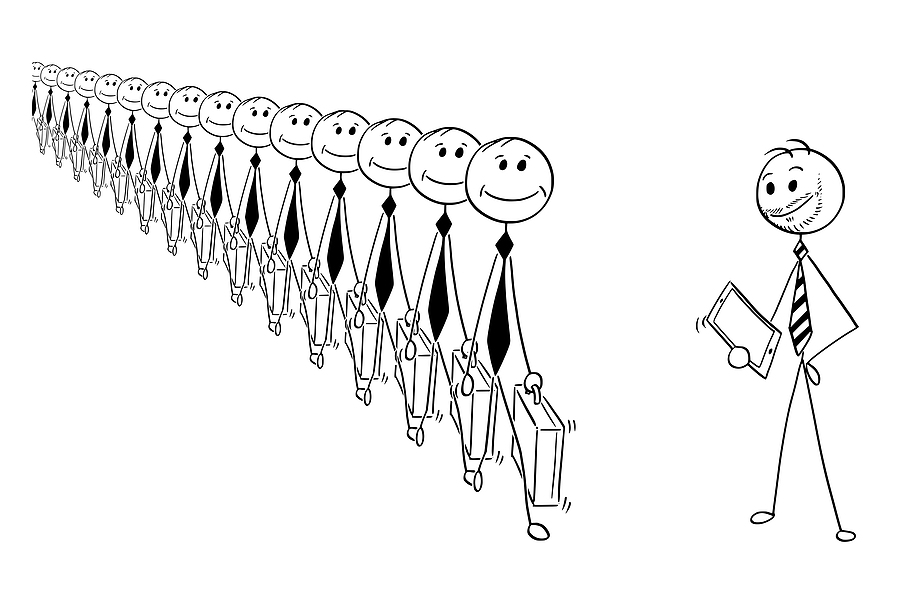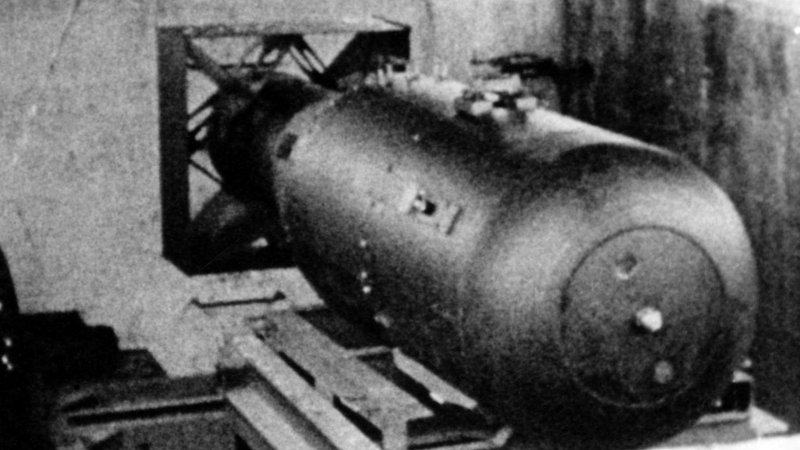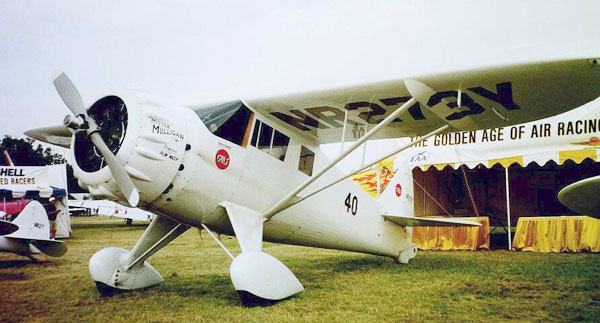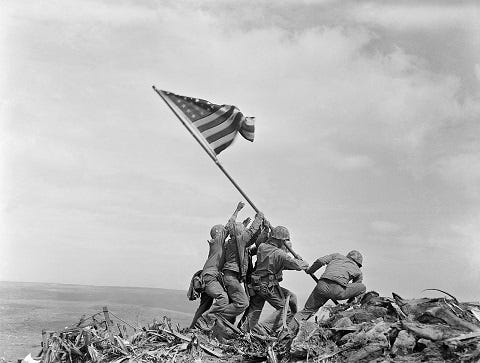July 28, 2023

Source: Bigstock
Some years ago, in Australia, I appeared on a platform with a prominent intellectual, many times more famous than I. We were asked what it took to be good.
The famous intellectual, who had had a brilliant career, answered that in order to be good, you had to be intelligent. When my turn came to answer, I said that the previous answer was not only wrong in fact but appalling in its implications.
It seemed to me, I said, that there was no connection between intelligence and goodness, and since the previous speaker was obviously referring to the 1 percent of the population or so that she thought might be approximately her intellectual equal, she was in effect saying that the vast majority of human beings could not be good. I count myself a misanthrope, but I am not as misanthropic as that.
She tried to deny that she had said any such thing, but the audience corrected her: She had indeed said it, and, without resorting to Freudian analysis, I think it revealed her true belief in the matter.
I know what she meant, however. To be good, you must have the right opinions about important abstract questions affecting humanity, and to have those you must be well-informed and capable of drawing correct conclusions from a large amount of information. In short, to be good you must both be highly intelligent and agree with me.
The intelligent are much given to the sin of pride, a sin that is not shared, in my experience, by the truly brilliant. Charles Dickens, for example, who knew himself to be a man of genius and called himself “the Inimitable” (which he certainly was), once wrote that he held his talent in trust. He meant by this that it was God-given and he had a duty to use it for the benefit of mankind. Few people have worked harder than he, but no amount of effort by itself would have sufficed to produce so many immortal characters and pages. For reasons that will never be elucidated, he was born with a spark that the rest of us do not have.
The idea of goodness as having the right ideas on abstract questions is a godsend to mediocrities. It allows them to learn and repeat a few phrases or formulae and think that they are good and therefore ought to have a special role to play in the direction of society.
I have no disdain for mediocrity and mediocrities as such; they are, indeed, very necessary to the functioning of any society, as is hypocrisy. (Try to imagine a world without hypocrisy—how dull, frightening, and unbearable it would be! There is, of course, hypocrisy and hypocrisy, of the laudable and necessary, and of the abominable and dangerous, kind, with everything in between.)
Mediocrity is very well in its place; among other things, it oils the wheels of administration. Much has to be done routinely, and if everyone were constantly brimming with brilliant ideas demanding that they be put immediately into practice, chaos would result. Besides, many people like to lead their lives as trains run on rails. It is as well that they exist. Moreover, even very talented people are usually mediocre in the largest parts of their lives.
But with the spread of the idea that goodness consists entirely of having the right ideas about the abstract questions of the day, presented in such few slogans that even the meanest of intelligences can grasp or memorize them, together with the seemingly obvious principle that the good should inherit the earth, the scene is set for a kind of prolonged coup d’état by the mediocre. And when it comes to the current crop of politicians in the Western world, many of them seem to have mediocrity inscribed on their faces.
By such, I do not mean that they make mistakes. Everyone does that. I mean that they look as though they lack the raw capacity to think properly. Perhaps even worse, they also look characterless, as if they had experienced nothing, or might as well have done so for all the trace experience has left on their faces. These do not even rise to the level of malignity or low cunning; they somehow convey the prolonged consumption of meals they have never had to pay for. When they smile, there is something triumphant in their expression, as if they were subliminally aware that they had triumphed in life without having fully deserved to do so.
The one characteristic that they have, however, is ambition. They are mediocre, not particularly intelligent, and characterless; but they are ravenously ambitious. Ambition, rationalized by supposed goodness, takes up all the mental space that should be occupied by other traits, thoughts, and desires. They are the kind of people who can endure any amount of boredom at a meeting, so long as it advances their career.
“Genius,” said Carlyle more or less, “is an infinite capacity for taking pains.” This is not so, but it certainly captures something about what is required to rise in a bureaucratic organization these days. Power does not so much grow out of the barrel of a gun, as Mao Tse-Tung put it, as out of the ability to get an item on the agenda of a meeting. The meeting is the bazooka of the apparatchik.
Of course, I am painting with a broad brush. Bureaucratic infighting is nothing new in the history of the world, nor is talent even now lacking. Scheming nonentities there have always been, and not a few of them were successful. But I do not remember a time when there seemed to be so many of them, or when the dark arts of infighting were so essential to success as measured by place in a hierarchy. The heads of universities used to be distinguished people; museums were run by scholars. Sloganeering was not a path to success and indeed was suspect as being indicative of intellectual incapacity. You don’t have to be intelligent to be good, nor do you have to be intelligent to succeed in modern organizations. I could give many concrete examples, but I wish to avoid legal complications.
Theodore Dalrymple’s latest book is Ramses: A Memoir, published by New English Review.
Rapid success may often breed failure. Historians have marveled at the relatively short period of time from the second Punic war onward that it took for the Roman city state to conquer the known world. Or at least all that was worth conquering at the time in Europe and along the Mediterranean. There are several basic explanations for this incredible success.
Prior to the conquest of Carthage in the Punic Wars, Rome steadily expanded across the Italian peninsula. As Rome conquered other city states in Italy, they provided various levels of citizenship to those in the conquered territories. Conditions of new allegiances from conquered city states varied, but one common denominator was that each city state must send their young men to fight in the Roman legions when called uponThe Roman republic was built upon the farmer citizen soldier. This system expanded as Rome expanded its influence across Italy. After the first Punic war, Sicily was captured from Carthage and Rome installed a governor, and of course, collected taxes. This was the first step in deviating from its prior policy of granting various levels of citizenship to the conquered. In the second Punic war, although Hannibal ravaged the Roman countryside, Rome outlasted the great general because of an inexhaustible source of manpower, and because they simply never entertained the notion of surrender.
Finally, Publius Conelious Scipio proved too great a match for Hanibal, and Rome won the second Punic war. Rome destroyed Carthage in the third Punic War, enslaved its citizens, and captured North Africa. Before long, Rome Conquered Greece, Macedonia, and the rest of the Mediterranean, culminating in the assassination of Julius Caesar and the end of the Republic.
As Rome expanded outside of Italy it began assigning governors to new provinces and a system of taxation and slavery commenced replacing the old system of expanding citizenship. Some small farmers sold their farms and joined the legions to chase glory and riches. Veterans returned from war without riches, and if they did not sell their farms, many were forced to for economic reasons. In Italy the farmer citizen soldier system was replaced with large slave plantations and Roman virtue was replaced with Roman decadence. Starting with Octavian/Augustus, the Roman republic became the Roman empire.
Yes, this is a simplified description of what occurred, yet it is still generically fairly accurate. The success of Roman conquest planted the seeds that first doomed the republic, and then doomed the empire itself.
The United States is the new Roman republic. The American republic was modeled after ancient Rome. After the Dark and Middle Ages, the Italian Renaissance began a new period of growth and expansion. The Italian Renaissance led to a broader European Renaissance, and the ensuing Enlightenment. The Italian Renaissance also influenced education in Europe for centuries. Thus, the founders were steeped in classic literature studying Polybius and other classic writers.
There are many similarities between the American republic and the Roman republic. Like Rome, the citizen farmer soldier won the American Revolution. The self reliant rugged individualist is the American equivalent to Roman virtue. George Washington was hailed as an American Cincinnatus, serving to save the country, then returning to life as a farmer. That the reference was even used demonstrates the cultural inheritance from ancient Rome.
The rapid success of the United States has also planted the seeds of its collapse. The United States expanded rapidly in the 1800s and like Rome expanded citizenship across the continent, mostly through European migration. As Rome expanded outside of Italy, the United States in the 1900s began a more aggressive policy of military intervention and was on the winning side of two world wars.
This great success enhanced wealth, although rather than importing slaves as Rome did, cheap labor was imported, as were cheap imports. The manufacturing base that created an economic engine that helped win WWII was gutted in the late 1900s and replaced with government employment. The peace dividend and Pax Americana that was to come about from the end of the Cold War, was squandered quickly.
The international military expansion and the warfare state helped create a domestic welfare state. The two just seem to go hand in hand. A surveillance state was created in the post 911 world. The level of corruption has become so bad it has made so called banana republics look integrous. The leading candidate for president gets indicted routinely now in an obvious effort to stop his political campaign. The international entanglements have inverted and eroded national security. An international deep state has arisen, and equal to American military projection around the globe, there has been a reciprocal loss of sovereignty. In short, the American republic has flatlined.
Rome fell and there was a thousand years of darkness. Well, depends on whether one liked being part of the Roman empire or not. Although, civilization certainly reverted and dwindled from its heights during Pax Romana to a much less technologically, and culturally advanced state of affairs. If the American republic fails, civilization will collapse globally. Instead of a thousand years of darkness, we will face a thousand years or more of global tyranny.
Failure sometimes breeds success. After a thousand years of darkness the Italian Renaissance reinvigorated Western civilization. There was a rebirth. There was a revisiting and rediscovery of classic Roman civilization. Across Italy small republics sprang forth, and for a few hundred years Italy was experiencing a period similar to the ancient Greek golden age with vibrant city states thriving. There was a period of prosperity economically, intellectually, and culturally, as well as a period of invention. We saw geniuses the likes of Michelangelo and Leonardo Da Vinci. The Italian Renaissance was also a period of great violence and even cynicism as evidenced by Machiavelli’s The Prince.
Rather than allow civilization to collapse and wait a thousand years, or worse, allow the human race to go extinct, it is time to start a National American Renaissance Movement. A rebirth of Western Civilization and a return to the basic principles of limited government and Natural Rights. A vigorous defense of individual rights and a reinvigoration of the cultural heritage that respects the rights of the individual, freedom of conscience, and basic human dignity.
The turmoil ahead may be unavoidable. So be it. It is time to push back against the globalists that seek to undermine the basic right to self government. Our sacred right to remain human is even under assault. It is time to mobilize. It is time to rescue the republic.
The alternative is to allow civilization to collapse, and humanity to potentially go extinct...
Dr. Joseph Sansone

Today (Sunday) marks the 78th anniversary of the Enola Gay, piloted by Colonel Paul Tibbets, dropped the atomic bomb that destroyed Hiroshima. Three days later, we dropped the second atomic bomb on Nagasaki. The Japanese warlords still voted 3-3 on surrendering. Intervention by the emperor ended the war and the Japanese told the allies it planned to surrender, which it did on September 2.
With the new movie Oppenheimer’s debut last month and the end of the teaching of American history in a positive light, lefties have resurrected the argument against using the A-bomb to end World War II.
The Atlantic published the first and perhaps only rebuttal you need to read to this daft argument in December 1946. Written by Karl T. Compton, an atomic physicist and president of MIT, one of the many people involved in the development of these two bombs, the article addressed the argument against the bombings.
Compton wrote, “About a week after V-J Day I was one of a small group of scientists and engineers interrogating an intelligent, well-informed Japanese Army officer in Yokohama. We asked him what, in his opinion, would have been the next major move if the war had continued. He replied: ‘You would probably have tried to invade our homeland with a landing operation on Kyushu about November 1. I think the attack would have been made on such and such beaches.’
“‘Could you have repelled this landing?’ we asked, and he answered: ‘It would have been a very desperate fight, but I do not think we could have stopped you.’
“‘What would have happened then?’ we asked.
“He replied: ‘We would have kept on fighting until all Japanese were killed, but we would not have been defeated,’ by which he meant that they would not have been disgraced by surrender.
“It is easy now, after the event, to look back and say that Japan was already a beaten nation, and to ask what therefore was the justification for the use of the atomic bomb to kill so many thousands of helpless Japanese in this inhuman way; furthermore, should we not better have kept it to ourselves as a secret weapon for future use, if necessary? This argument has been advanced often, but it seems to me utterly fallacious.”
The Japanese would rather die than surrender. They proved this in battle after battle.
The Battle of Iwo Jima began on February 19, 1945. Four days later, six Marines from E Company, 2nd Battalion, 28th Marines raised the flag at Mount Suribachi. The Japanese kept fighting for another month. 18,375 of the 21,060 Japanese soldiers in the battle died — most of them fighting long after those Marine raised our flag. Only three of those Marines left Iwo Jima alive.
Leona Woods, the only woman physicist in the Manhattan Project, was quite proud of her work alongside Enrico Fermi. She hid her first pregnancy in order to keep working. The baby showed no ill-effect, by the way.
Woods was no token and no diversity hire. She said, “My job was to use the expertise I already had to build boron trifluoride counters for detection of the neutron flux in the chain-reacting pile yet to be built. But Fermi gave me also the job of taking notes on his lectures to the crew who would build the chain-reacting pile under the west stands.”
The stands refer to the Amos Alonzo Stagg Field that stood empty at the University of Chicago after it dropped football.
For her, the bomb was personal.
She said, “I certainly do recall how I felt when the atomic bombs were used. My brother-in-law was captain of the first minesweeper scheduled into Sasebo Harbor. My brother was a Marine, with a flame thrower, on Okinawa. I’m sure these people would not have lasted in an invasion. It was pretty clear the war would continue, with half a million of our fighting men dead not to say how many Japanese.
“You know and I know that General (Curtis) LeMay firebombed Tokyo and nobody even mentions the slaughter that happened then. They think Nagasaki and Hiroshima were something compared to the firebombing.
“THEY’RE WRONG! I have no regrets. I think we did right, and we couldn’t have done it differently. Yeah, I know it has been suggested the second bomb, Nagasaki, was not necessary. The guys who cry on shoulders. When you are in a war, to the death, I don’t think you stand around and ask, ‘Is it right?’”
Pearl Harbor removed that question. The Japanese sneak attack was unprovoked. While it is fashionable among some conservatives these days to say FDR baited Japan, the fact is Japan had no reason to attack. FDR imposed sanctions for very good reasons. History calls one of those reasons the Rape of Nanking.
Australia’s Pacific War site reported, “The Japanese were infuriated by the strength of Chinese resistance, and when China's Nationalist capital Nanking fell in December 1937, Japanese troops immediately slaughtered thousands of Chinese soldiers who had surrendered to them. The Japanese then rounded up about twenty thousand young Chinese men and transported them in trucks outside the city walls where they were killed in a massive slaughter. Japanese troops were then encouraged by their officers to loot Nanking, and slaughter and rape the Chinese population of the city.
“For six weeks, life for the Chinese in Nanking became a nightmare. Bands of drunken Japanese soldiers roamed the city, murdering, raping, looting, and burning at whim. Chinese civilians who were stopped on the street, and found to possess nothing of value, were immediately killed. At least twenty thousand Chinese women were raped in Nanking during the first four weeks of the Japanese occupation, and many were mutilated and killed when the Japanese troops were finished with them.
“The Japanese troops were encouraged by their officers to invent ever more horrible ways to slaughter the Chinese population of the city. When the bodies of murdered Chinese choked the streets and the gutters ran red with their blood, the Japanese were forced to refine their methods of slaughter in the interest of preventing the spread of disease. Batches of Chinese civilians were rounded up and herded into slaughter pits. Here the grinning Japanese soldiers would either bury them alive, hack them to death with their swords, use them for bayonet practice, or pour petrol on the victims and burn them alive. The bodies of thousands of victims of the slaughter were dumped into the Yangtze River until the river was red with their blood. After looting Nanking of anything of value, the Japanese started fires that gutted one third of the city.”
This was not disinformation or propaganda. Nor was Japan using 200,000 captured women as prostitutes for their soldiers.
After Pearl Harbor, the Japanese turned to committing atrocities against American troops. There was the Bataan Death March — a totally unnecessary 100-mile march that resulted the death of half the American POWs. The follow up was the Sandakan Death March.
Bombing Japan into surrender was the only option. Harry S. Truman considered the bombing to be his biggest achievement as president and rightly so. He had survived as a field artillery officer that meatgrinder we now call World War I.
Truman wrote a letter to Compton in response to that Atlantic article.
The president said, “Your statement in the Atlantic Monthly is a fair analysis of the situation except that the final decision had to be made by the President, and was made after a complete survey of the whole situation had been made. The conclusions reached were substantially those set out in your article.
“The Japanese were given fair warning, and were offered the terms which they finally accepted, well in advance of the dropping of the bomb. I imagine the bomb caused them to accept the terms.”
The only reason we did not drop three bombs is that we did not have a third one.
We do now.
To the rest of the world, I say don’t want none, don’t start none.
Don Surber is a retired newspaperman who lives in Poca, West Virginia, with his wife of 40 years, Lou Ann. They have three adult children.While serving in the US Army, Surber worked on the Fort Stewart Patriot and the Stars and Stripes
You only seem to hear about Michelangelo and the Sistine Chapel, but there were several other artists who certainly were no slouches.



